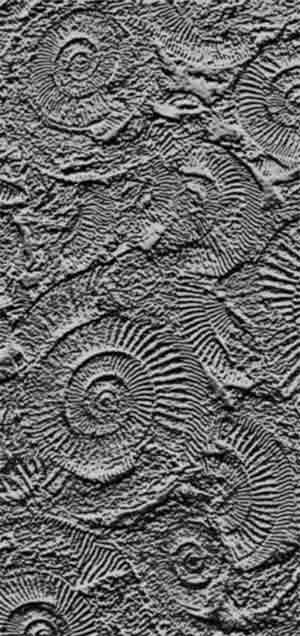W.L. Pohl:
Economic Geology, Principles and Practice: Metals, Minerals, Coal and Hydrocarbons
— an Introduction to Formation and Sustainable Exploitation of Mineral Deposits
Second edition published 2020
Preface
The new age of economic geology
A new age? Yes, I do believe that we witness an exciting growth of geological research and its application in economic geology, even though building on knowledge created by generations of earlier scientists. Foundation of this revolution — some call it disruption — are new geological understanding and concepts.
One of the great advances is Lid Tectonics that have dominated Earth systems in the first half of our planet's history. Tremendous new tools and methods at all scales are available, from Earth observing satellites to tomography of crust and mantle, drones mapping alteration minerals in open pits, handheld XRF and SWIR spectrometers, laser Raman spectroscopy, laser ablation ICP-MS, and electron probe microanalyzers (EPMA). Add the unlimited potential of the digital transformation, of big data, artificial intelligence, machine learning, mineral systems research, and, of course, the professionals who drive the pace.Is it possible to catch a screenshot of this movement? Not fully. I admit that some parts of the image provided in this book may be fuzzy, where science advances at too quick a pace. Yet, this book (Economic Geology 2nd edition or EG2) aspires to provide a systematic overview across the state of science and practice in economic geology. EG2 offers a panorama of the whole field of geology applied to the realm of mineral resources. Its range is global, reflecting the spread of mining and exploration activity, and of the actors out there. It is based on over a thousand recent papers selected from first class journals.
Readers may expect to find access to present-day knowledge in order to explore the great new ideas, discoveries, methods and technologies as well as much detail! EG2 addresses professionals, earth science students and graduates, academic teachers and scientists; undergraduates are invited to practice selective reading. Some authors of introductory ore geology books strip science of contradictions, avoiding the discussion of different interpretations and minimizing references to published papers. True, this may facilitate learning for beginners, but in my opinion, is wrong. We should not hide complexity, but accept a world of many unknowns and fuzziness. Like most natural sciences, economic geology seeks ever better comprehension and builds models, parts of which are uncertain and in flux. The book proposes to improve the current haphazard subdivision and denomination of ore deposits by merging them into a systematic petrogenetic-tectonic classification.
How to use EG2? — I suggest to initially quick-read Chapter One, which provides the foundation for the rest of the book. Only then should you follow your specific interests. Do not hesitate to refer frequently to the Subject and Location Indexes because information is often spread through the book, concerning themes, ore deposit classes and mines such as, for example, the Olympic Dam iron oxide copper gold (IOCG) deposit. Jumping back and forth to different pages is an absolute must.
Soon, the world population will reach the number of 10 billion. The supply of minerals for humanity requires exploration, development and extraction, from mines on land to floating platforms on the high seas or to submarine robots. Metallogenetic-minerogenetic (source — transport — trap) models of Earth processes that contribute to the formation of ore and mineral deposits are the foundation for many of these activities. And let us not forget that as a profession, we always have to strive for precautionary mitigation of any negative environmental and socio-economic impact of our work, guided by an enlightened environmentalism.
Many people have supported me in preparing this second edition of my Economic Geology. Outstandingly helpful was Dr. Bernd Lehmann, Professor at Clausthal University and Chief Editor of Mineralium Deposita. Thank you Bernd, thank you all.
August 2020 Walter L. Pohl
